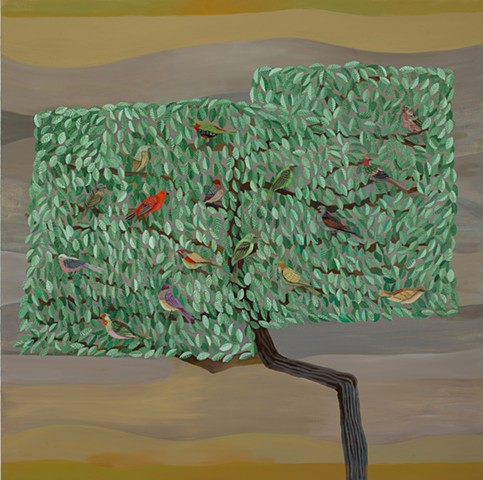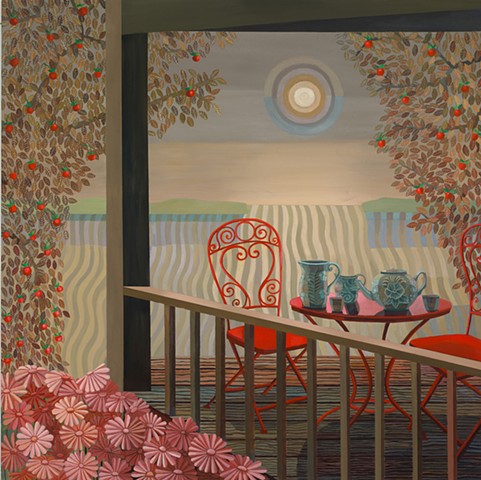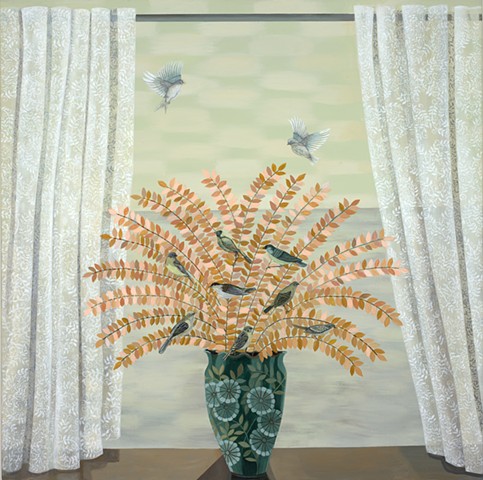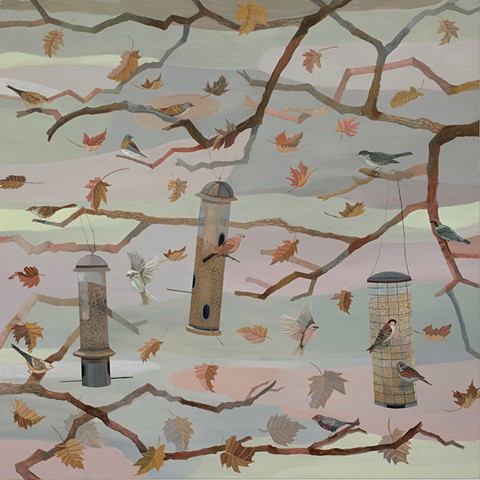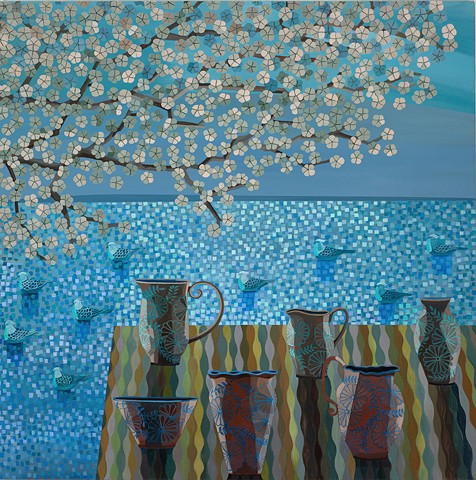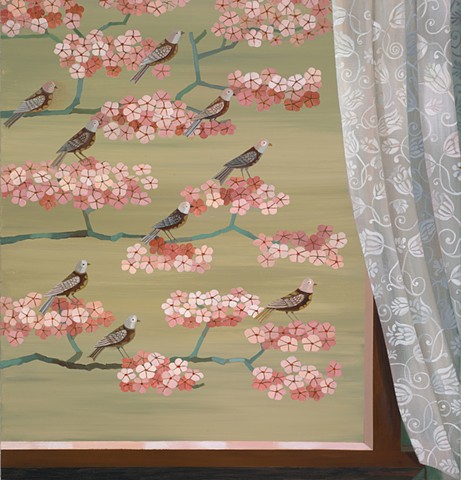A Painting is a Place
A Painting is a Place is the title for this new group of works by Gail Spaien and it’s true, paintings are places, just as books are. You feel a story you’ve read as a set of places you’ve actually occupied. Your body holds their trace. So too in paintings. Those rooms in Bonnard or Vermeer paintings feel enterable not because they resemble real locations in any way an architect could map out, but because they have the texture of a place’s atmosphere: the smell of light on objects, the acoustic of lived rooms. Perhaps that’s paint’s work, to suspend human experience in its matter. Spaien’s paintings do this too.
A painting is a place and it’s like a place, in that it’s an object which mimics the shape of the places in which it’s made and shown. A painting hung on a wall is like a wall, in other words, and it happens that Spaien’s new paintings call up histories of decorated walls both sublime and quotidian, from the disco-ball mosaic interiors of Byzantine churches to the patterned wallpaper of suburban homes. In the past, pattern in painting was always threatening to render fraudulent any attempt to carve out an imaginary space: flat effects emphasised the flatness of the objects they sat upon. Not so in Spaien’s paintings. Patterns – leaves, waves, petals, folds, feathers, branches, and planks – are part of how her paintings make places that feel enterable, memorable. This isn’t the contradiction it sounds like.
A painting is a place, but what sort of places are these? Every work on show is an interior, if not in literal content then in its effect of proximity. Birds perch on trees that seem close enough to reach out and touch; nothing is really ever distant. The word interior might seem to imply something psychologically withdrawn or enclosed, but that’s not quite right either. Spaien’s works bring the outer world close but without hemming it in to her painted spaces. In Serenade #8 a squad of mandarin ducks move in formation across a crimped lakescape. By the arrangement of flowers in a vase and a pair of chairs in the painting’s lower half we’re given to read those ducks as far from where we are, and yet Spaien’s rhyming of tone and mark draws them into our purview. The pulse of abstraction is what binds these parts together: the feel is that of the world not seen and measured but known.
A painting is a place and a place is enlivened by attention, which is always what is happening in Spaien’s paintings. Again and again, they draw back the curtain on the world we’ve always known, finding ways to make paint itself a corollary of that attentive act. The patterns they disclose announce not only the spiralling endlessness of what vision provides for us but also the delight of an observing subject who feels themselves anticipated, called to attention, by what the world makes available to us. There is another world, but it is in this one, as Paul Éluard said, and Spaien shows its truth, as clear as daylight.
Ben Street
Art historian, lecturer and writer based in London
February, 2023
Photograpy: Luc Demers
